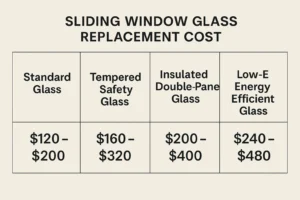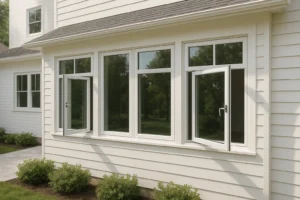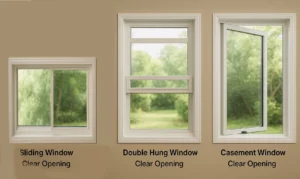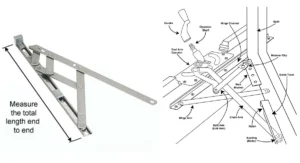Schnelle Antwort: Fenster mit Flügeln übertreffen im Allgemeinen Schiebefenster in Bezug auf Energieeffizienz, Belüftung und Sicherheit, während Schiebefenster sich durch ihre Erschwinglichkeit, Raumeffizienz und geringen Wartungsaufwand auszeichnen. Die richtige Wahl hängt von der Gestaltung Ihres Projekts, dem Klima und dem Budget ab.
Für professionelle gewerbliche Großkunden - wie Fensterhändler, Baufirmen und Bauunternehmer - ist die Auswahl des richtigen Fenstertyps eine strategische Entscheidung, die sich auf die langfristige Leistung, die Kundenzufriedenheit und die Rendite auswirkt. Dieser Leitfaden geht über die grundlegenden Vor- und Nachteile hinaus und bietet detaillierte technische Einblicke, Ratschläge zur Klimatauglichkeit und praktische Beschaffungstipps für Großprojekte.
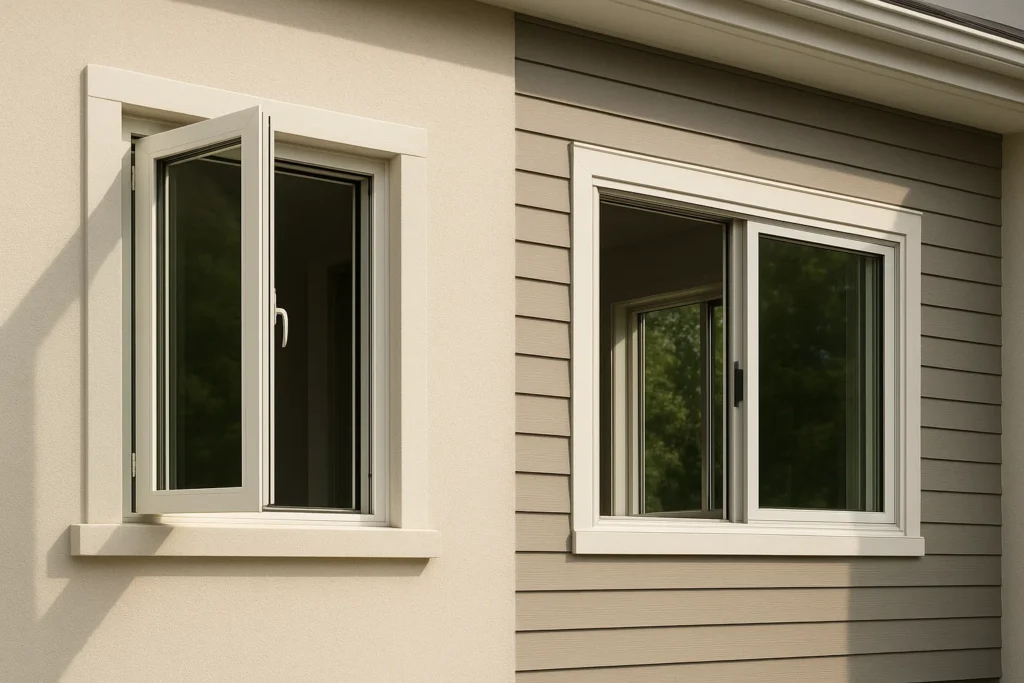
Die zwei Fenstertypen verstehen
Fenster mit Flügeln-auch Kurbelfenster genannt- sind seitlich angelenkt und werden mit einer Kurbel oder einem Hebel nach außen geöffnet. Ihre Kompressionsdichtungen sorgen für einen luftdichten Abschluss, was sie zu einer ersten Wahl für energiebewusste Konstruktionen macht. Sie werden häufig für hohe, schmale Öffnungen in Wohn- und Gewerbeobjekten eingesetzt.
Schiebefenster öffnen sich horizontal entlang einer Schiene, wobei sich ein oder beide Flügel seitlich bewegen. Sie werden in der Regel für breitere Öffnungen, moderne Ästhetik und Projekte mit eingeschränktem Platzangebot bevorzugt - wie z. B. Wohnblocks mit schmalen Balkonen oder Ladenfronten, die dem Fußgängerverkehr ausgesetzt sind.
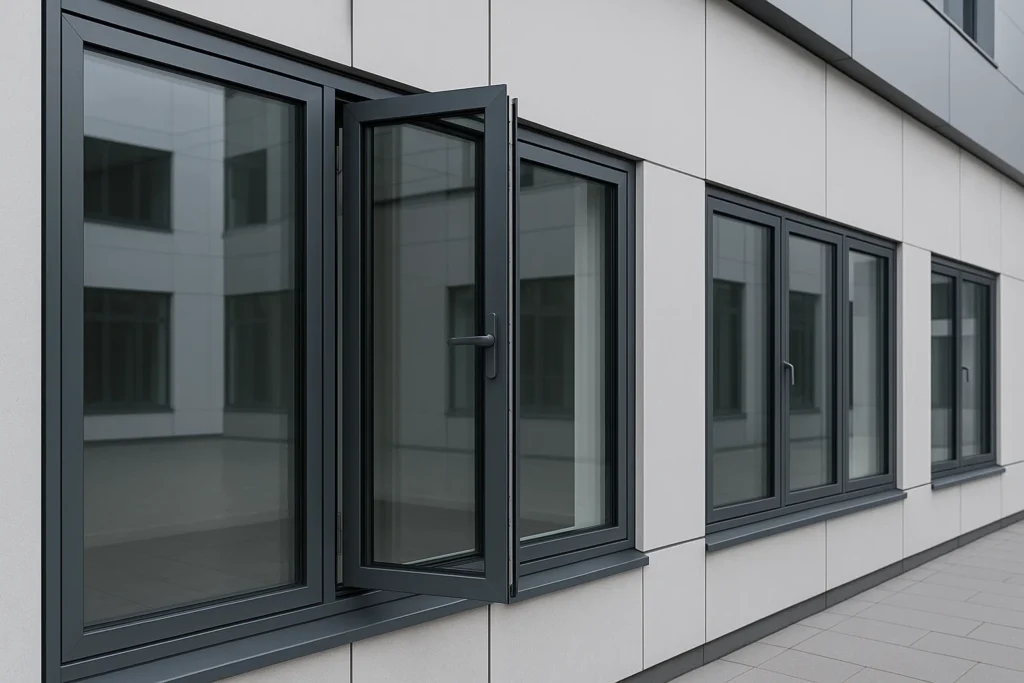
Der wichtigste Vergleich: Flügelfenster vs. Schiebefenster
| Merkmal | Flügelfenster | Schiebefenster |
|---|---|---|
| Energie-Effizienz | Ausgezeichnet. Kompressionsdichtungen ziehen den Flügel fest an den Rahmen und reduzieren Zugluft und Wärmeverluste. Ideal für extreme Klimazonen. | Mäßig. Flexible Dichtungen ermöglichen ein reibungsloses Gleiten, können aber, insbesondere bei älteren oder minderwertigen Geräten, geringfügige Luftlecks verursachen. |
| Belüftung | Lässt sich vollständig öffnen und ermöglicht den Luftstrom des 100% - besonders vorteilhaft in Gebäuden des Gesundheitswesens, des Gastgewerbes und des Bildungswesens. | Öffnet sich halb, es sei denn, beide Fensterflügel sind bedienbar. |
| Sicherheit | In den Rahmen integrierte Mehrpunktverriegelungen bieten einen hohen Widerstand gegen gewaltsames Eindringen. | Einfache Fallenschlösser; ausreichend, aber im Allgemeinen weniger sicher. |
| Platzbedarf | Benötigt von außen Freiraum für den Flügelschlag. | Lässt sich im Rahmen verschieben; ideal für enge Außenbereiche. |
| Kosten | Höhere Anschaffungs- und Installationskosten. | Geringere Kosten, einfachere Installation. |
| Wartung | Innen leicht zu reinigen; die Kurbel muss geschmiert werden. | Nur wenige Teile; die Reinigung des festen Flügels erfordert Zugang. |
Anwendungsszenarien aus der realen Welt
Luxushotels an der Küste: In windigen, salzhaltigen Umgebungen, Flügelfenster bieten überlegene Dichtungs- und korrosionsbeständige Beschlagsoptionen, die den Wartungsaufwand und die Beschwerden der Gäste reduzieren.
Hochhaus-Bürotürme: In oberen Stockwerken, in denen die Windlastbeständigkeit von entscheidender Bedeutung ist, trägt die dichte Abdichtung der Fensterflügel dazu bei, die Effizienz der Heizungs-, Lüftungs- und Klimaanlagen zu erhalten und das Eindringen von Lärm zu reduzieren.
Erschwinglicher Wohnungsbau: Schiebefenster sind eine kostengünstige Option mit einfacher Montage, die sich ideal für kostensensible Projekte eignet, ohne dass die grundlegende Haltbarkeit beeinträchtigt wird.
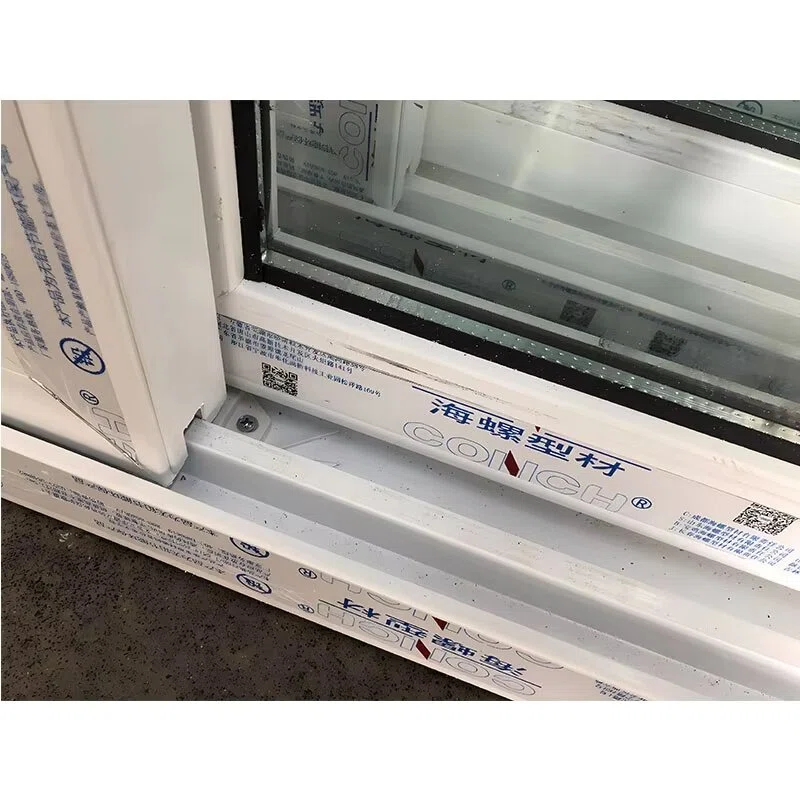

Klima-Eignung
Die Wahl zwischen einer Flügelfenster und ein Schieberegler sollte auch die regionalen Klimabedingungen berücksichtigen:
- Kalte Klimazonen: Fensterflügel verhindern Zugluft und Wärmeverluste und sorgen so für mehr Komfort und niedrigere Heizkosten.
- Feuchte Küstenregionen: Fensterflügel mit Beschlägen aus rostfreiem Stahl sind resistent gegen Salzkorrosion, aber wenn der Platz im Außenbereich begrenzt ist, können auch Schiebefenster gewählt werden.
- Trockene und staubige Regionen: Fensterflügel sind dichter und reduzieren das Eindringen von Staub im Vergleich zu Schiebefenstern.
Praktische Einkaufstipps für Kunden
- Passen Sie den Fenstertyp an die Projektstruktur und die Bedürfnisse des Endnutzers an.
- Beurteilen Sie die Optionen für Rahmenmaterial und Verglasung im Hinblick auf die langfristige Leistungsfähigkeit.
- Berücksichtigen Sie die Lieferkette und die Vorlaufzeit für kundenspezifische Bestellungen.
- Verwenden Sie eine Strategie mit gemischten Fenstern, um Kosten und Leistung in Einklang zu bringen.
Schlussfolgerung
In der Debatte zwischen Fensterflügeln und Schiebefenstern gibt es keinen universellen Gewinner, sondern nur die beste Lösung für die Anforderungen Ihres Projekts. Fensterflügel bieten eine erstklassige Leistung in Bezug auf Abdichtung, Belüftung und Sicherheit, während Schiebefenster durch ihre Erschwinglichkeit, Einfachheit und Raumeffizienz glänzen. Für professionelle gewerbliche Großkunden bedeutet das Verständnis dieser Kompromisse, dass sie ihren Kunden Lösungen anbieten können, die den Gebäudewert und die Zufriedenheit der Bewohner steigern.
F&A: Flügelfenster vs. Schiebefenster
Sind Flügelfenster energieeffizienter als Schiebefenster?
Ja. Ihr Kompressionsdichtungsdesign minimiert Luftlecks, was sie ideal für energiebewusste Projekte in extremen Klimazonen macht.
Was ist bei Geschäftsgebäuden einfacher zu warten?
Schiebefenster haben weniger mechanische Teile, aber Fensterflügel sind von innen leichter zu reinigen, was den Wartungsaufwand bei Hochhausprojekten verringert.
Kann ich beide Typen in einer Entwicklung mischen?
Auf jeden Fall. Viele Großkunden kombinieren beides - Kassetten für Hochleistungsanforderungen, Schieberegler für Kosteneffizienz.
Ausführlichere Antworten finden Sie in unserer Fenster mit Flügeln FAQ.

